|
HOME: www.hiltonpond.org |
|||
THIS WEEK at HILTON POND Subscribe for free to our award-winning nature newsletter (Back to Preceding Week; on to Next Week) |
RAISE THE DECK 'MIDST As we worked this week at demolishing and rebuilding the back deck at Hilton Pond Center's old farmhouse, for some odd reason "Deck the halls with boughs of holly" kept coming to mind. It made no sense; we were toiling over deck reconstruction and not decking any halls. Because it was October and leaves were changing we figured paraphrasing might be more appropriate, hence our new ditty "Raise the deck midst autumn color." (We hope this disclosure of strange songs ringing in our ears does not cause Christmas verse to start ringing in YOURS so far ahead of the holidays.) Anyway, as we hammered and cut wood we were indeed surrounded by colorful scenarios, but not all those fall hues were foliage--as our photos below indicate.
All text, maps, charts & photos © Hilton Pond Center Dismantling the deck was a greater chore than we anticipated. Some boards were rotten but the nails were as strong as the day we hammered them in 30 years ago; apparently we used 'way too many in the original construction! Our most important tools were a crowbar and a six-foot-long iron pry-bar, the latter of which gave us quite a workout. Without it, we never could have made any progress. It took a week to pry up all the old decking (above), leaving behind the framing that was stained but still in good condition. In the end we ended up with an eight-foot trailer stacked high with old lumber we took to the county landfill, where scales said we deposited more than a half-ton of wood.
All text, maps, charts & photos © Hilton Pond Center Demolition was slowed somewhat by an energetic Carolina Anole, Anolis carolinensis, that apparently considered the deck--whether new or old--to be his domain. He constantly survey the job site, looking for females that might wander through. More than once we had to delay our work when this hormonal herptile climbed on the end of the crowbar (above) Lest you think we've strayed from our theme of "Raise the deck midst autumn color," we should point out the red dewlap qualifies--as did the bright lime green the otherwise brownish anole turned when a female came into range.
All text, maps, charts & photos © Hilton Pond Center By the end of October the bulk of construction was finished despite the anole, with only edge boards, stairs, and railings to go. You'll note the new decking (above) has a hole where we lengthened it by three feet and had to accommodate a Flowering Dogwood tree just outside our office window. When work is complete, we'll have a very nice Observation & Teaching/Learning Platform for groups that come for Guided Field Trips at Hilton Pond Center--especially when we install a series of 16-foot-wide steps to serve as an amphitheater for visitors. (NOTE: Materials for the new platform were purchased in part through donations made during our recent "Birthday Causes" fund raiser. We deeply appreciate those much-needed gifts.)
All text, maps, charts & photos © Hilton Pond Center As deck work progressed we had to trim a few dead branches from an Eastern Red Cedar, Juniperus virginianus, that had begun hanging too low. As we cut one branch we noticed something rather unusual: the bark was covered with a crusty blue material that looked almost like spray paint. We recognized it, however, as a fungus. When most folks hear the word "fungus" the image that pops into their minds is that of a mushroom, and that mental mushroom is most likely bright orange or red or yellow. Mushrooms are just one kind of fungus, of course, and they are quite varied; that said, perhaps the least common color among them is blue. The one we found was VERY blue and quite flat, leading us to believe it was Cobalt Crust Fungus, Terana caerulea--a member of the Phanerochaetaceae (a worldwide family of similarly constructed flat fungi). Its spores are borne on a basidium--just like in those more three-dimensional mushrooms and toadstools that grace your lawn. Crust fungi typical grow on dead trees or bark--usually facing toward the ground on the undersides of limbs; this allows for more efficient dispersal of spores.
All text, maps, charts & photos © Hilton Pond Center As we worked on the deck we could see across Hilton Pond where afternoon sun has been bringing out colors of trees whose leaves are changing. One of our favorites, White Sassafras, Sassafras albidum, was identifiable even from a distance because of its distinctive shades of yellow and orange. Up close this tree is even easier to figure out because of the unusual configuration of its foliage. Whereas most plants have just one general leaf shape, White Sassafras has THREE; look closely at the photo above and you'll see some leaves have three lobes, others have two, and some just one. Sassafras is most famous as the flavor for a refreshing drink, but a compound called safrole produced by the tree is reportedly an effective mosquito repellent--all the more reason to appreciate this colorful tree.
All text, maps, charts & photos © Hilton Pond Center Not far from the White Sassafras was another plant whose fall foliage was more crimson-colored (above). This was a medium-sized shrub about five feet tall, with long compound leaves nearing up to 30 narrow leaflets that were long and pointed and serrate (with sawtooth edges). This species was easily recognizable as one of the sumacs--in this case Smooth Sumac, Rhus glabra--which occurs along roadsides and in other sun-drenched habitats across the eastern U.S. The species name for this plant comes from a Latin word for "bald," referring in part to the very smooth and hairless petioles visible in the photo above.
All text, maps, charts & photos © Hilton Pond Center Growing almost beside the Smooth Sumac was a second sumac species, this time the shorter Winged Sumac whose dark red foliage had a purplish tint. Winged Sumac, Rhus alata, takes its name from the wing-like structures along the main petioles of its compound leaf. Although both Winged Sumac and Smooth Sumac sumacs are in the same family (Anacardiaceae) with Poison Sumac--and Poison Ivy--neither is known to cause dermatitis. In fact, the berries of both our local sumacs can be used to make a tasty lemony tea. As we worked on the deck this week we tried to make good use of daylight, but on a couple of occasions we were still at it after sundown. On 29 October as we were gathering up tools for the night the motion- and infrared-sensitive security light on the opposite end of the old farmhouse flashed on. Wondering about the cause, we walked toward the front yard and saw something small and very dark shuffling slowly across fallen leaves. Anticipating a photo opportunity, we ran back to the deck and into the house, grabbed our camera, and hurried back to the front. The dark-colored critter was still there, so we aimed the camera in its direction and--after 32 years of smelling them--finally had a visual and photographic record for the Center of a Striped Skunk! The skunk wasn't all that colorful--just your basic black and white with a pinkish nose--but we were pleased at long last to see a live one on the property. We were also glad the skunk wasn't particularly perturbed by us or the camera flash.
All text, maps, charts & photos © Hilton Pond Center If you're a long-time follower of "This Week at Hilton Pond" you know we've had our difficulties with Striped Skunks, Mephitis mephitis. A few years ago an aromatic couple moved into the crawlspace of the old farmhouse--right beneath the master bedroom. It took a skunk removal specialist, gallons of deodorizer, and about 12 months until the atmosphere in that room returned to normal. The exterminator told us he had filled every crack and hole in the foundation and promised no stinky skunks could enter ever again. Our neighborhood skunks apparently didn't read the fine print of that contract, and this past August we were awakened from deep sleep by the unmistakable odor of Looneytoons' famous Pepé le Pew. And that brings up another matter that has caused us some consternation. Shortly after 1 a.m. on 28 October--the day before we photographed our skunk--we were driving back toward Hilton Pond after visiting at a distant hospital. As we approached the Center's driveway we saw something unusual crossing the asphalt road; in the headlights the animal appeared tan-colored, held its bushy tail horizontally, and ambled with forequarters and head close to the ground. It was perhaps two feet long. We were a little bleary eyed from a long evening at the hospital but were positive about the sighting. After long consideration we concluded this creature was a leucistic Striped Skunk--one whose normal melanin (black) pigment was mostly absent. It wasn't a true albino--in that case it would have been pure white instead of tan-colored--and we didn't see any white tail or body stripes that might have clinched an I.D. We posted our report to Hilton Pond Center's Facebook page and within minutes heard from a woman whose son saw something quite similar earlier that evening just a mile or so away; what he saw reminded him of a small kangaroo moving on all fours. Our sighting near Hilton Pond was definitely NOT a feral House Cat or any kind of dog, including Coyote or one of the foxes. Other Facebook friends suggested Badger (they're absent from South Carolina), Woodchuck (tail was too bushy), Fox Squirrel (mostly diurnal with almost no sightings in York County), Raccoon (our animal had no tail rings and was too low-slung in front), Nutria (has a hairless tail), and Armadillo (no way). Since our sighting was so close to Halloween some folks even suggested imaginary creatures such as snipe, plat-eye, and the legendary "Chupacabra." For now we're sticking with leucistic Striped Skunk. This mysterious animal was even less colorful than the normal-colored back and white skunk we photographed one night later, and it certainly paled to insignificance when compared to brilliant autumn hues we observed this week as we "raised the deck midst autumn color" at Hilton Pond. All text, maps, charts & photos © Hilton Pond Center All contributions are tax-deductible on your |
|---|
|
"This Week at Hilton Pond" is written and photographed by Bill Hilton Jr., executive director of Hilton Pond Center for Piedmont Natural History
|
|
|
Please refer "This Week at Hilton Pond" to others by clicking on this button: |
Comments or questions about this week's installment? Send an E-mail to INFO. (Be sure to scroll down for a tally of birds banded/recaptured during the period, plus other nature notes.) |

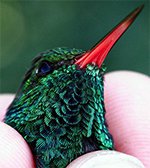


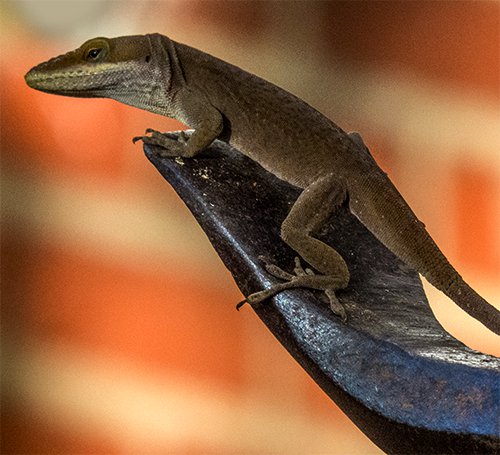
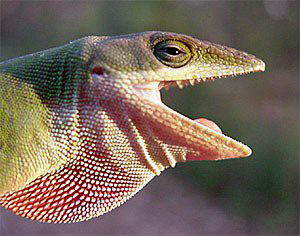 for a better view of his realm. Several times he went into full display
for a better view of his realm. Several times he went into full display 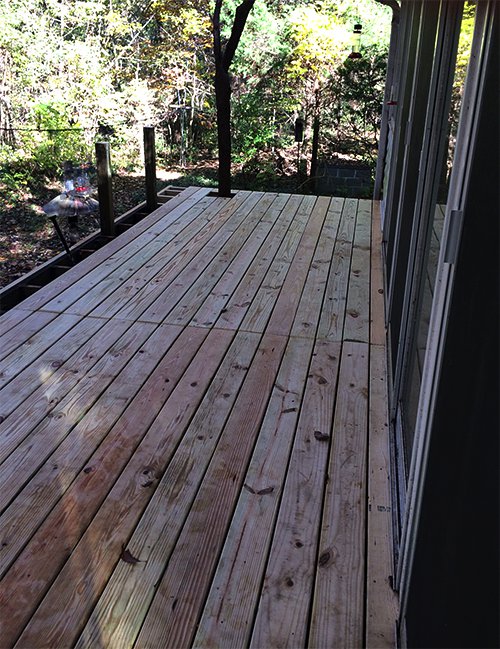
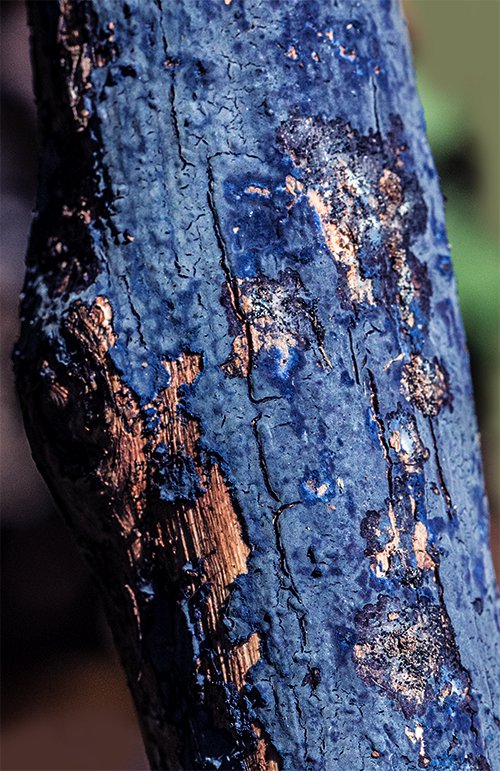
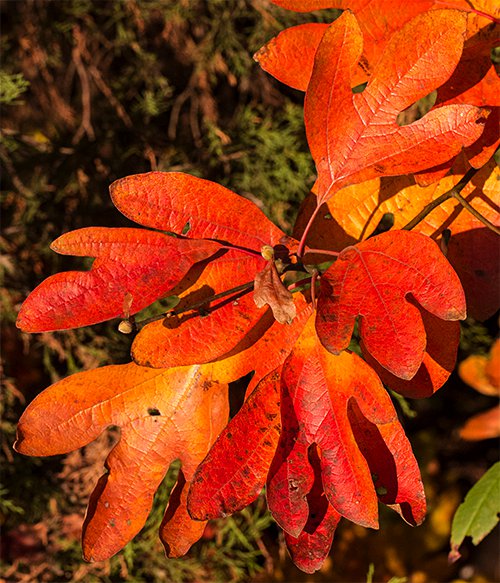
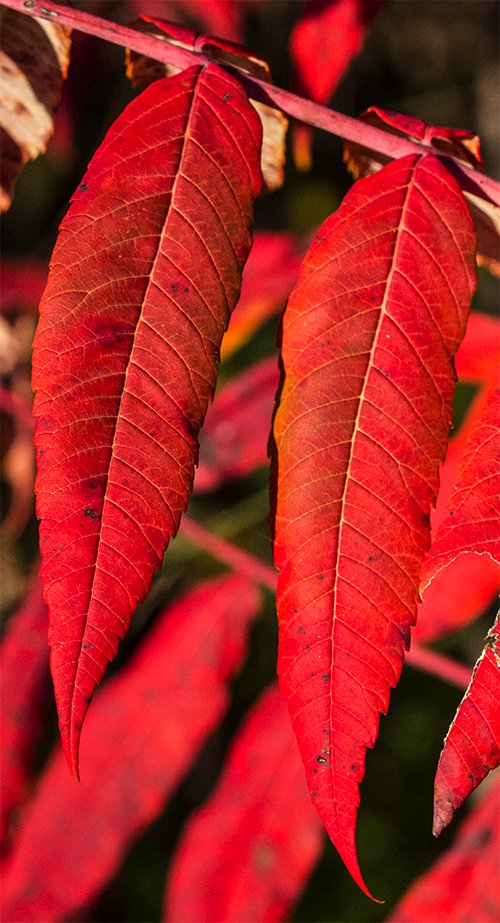
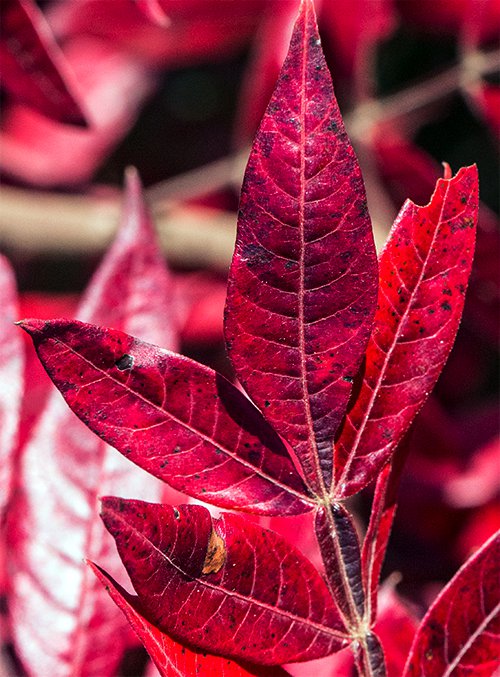
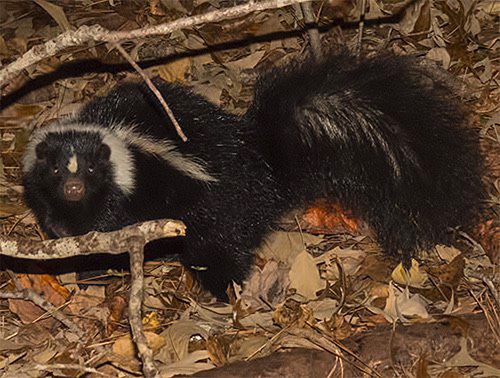
 Apparently a particularly industrious skunk had dug a new tunnel UNDER the bricks we had used to block the old entrance hole, gaining access to the vast crawlspace that housed its predecessors. We covered the new burrow with even more bricks and on a whim looked into the crawlspace a few weeks later, only to find a dead skunk lying beside the water heater. Fortunately the corpse had not begun to bloat, so we gingerly maneuvered it into a plastic bag for transport to a burial site on the far end of our 11 acres.
Apparently a particularly industrious skunk had dug a new tunnel UNDER the bricks we had used to block the old entrance hole, gaining access to the vast crawlspace that housed its predecessors. We covered the new burrow with even more bricks and on a whim looked into the crawlspace a few weeks later, only to find a dead skunk lying beside the water heater. Fortunately the corpse had not begun to bloat, so we gingerly maneuvered it into a plastic bag for transport to a burial site on the far end of our 11 acres.






 Oct 15 to Mar 15:
Oct 15 to Mar 15: